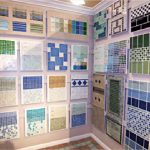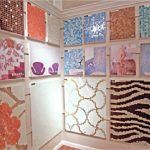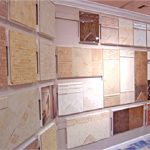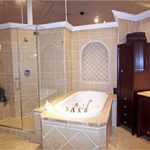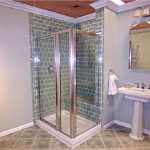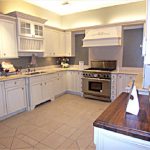Using current terminology, the word “paint” is understood as only one part of what is known as organic coating; these can be paints, varnishes, enamels, lacquers, dry sealants and all the various products like the solvents.
Organic coatings show the following characteristics depending on the composition: good flow and leveling; amount of spraying and film thickness, fast drying, high impermeability, good adhesion, flexibility and toughness, abrasion resistance and durability.
At the same time, the word “paint” refers to the substances utilized to generate color that usually translates into a mixture of a pigment with a binder, which may be diluted to a greater or lesser extent. There are also paintings that do not require a binder, such as latex, acrylics and leads.
There is a variety of techniques that can be considered as paintings, as well as supports and motifs. The techniques can differentiate into oily and water based, fixed or immovable (parietal or murals) and mobile (easel and canvas painting).
In the field of design and renovating buildings, the primary function of the application of paints is not only decorate or give color to the surface but also to protect these areas from environment agents that can damage the surfaces. A crucial factor when applying paint is how to choose the most appropriate painting according to the structural and environmental situations in the environment.
Not only should analyze the aesthetic qualities of the chosen paint, but also their technical characteristics. Sometimes, one type of paint is not enough to protect a surface effectively. In such cases, it is necessary to combine layers of paint that have different characteristics between them; each layer will provide a specific protection.
As mentioned, the environmental conditions are a key factor to consider before implementing a kid of painting. The geographical location in which they are located property then, must always be taken into account. Thus, in coastal and mountainous areas should buy a product that protects against ultraviolet radiation and salinity in desert areas and industries must also protect against salinity and the atmospheric acidity and southern areas should take special care with the moisture.
In the global market, there are two major types of paints: Oil-based paints and water based. Oil paints are known by that name because the binding agent is mainly made with oils and resins. These paintings are considered high durability and abrasion resistant. The cleaning of the tools used with this type of paint should be performed with the help of a solvent.
In the second type of paints, “water paints”, the binding agent is also resin, but it is dissolved in water. This type of paint is more popular among consumers because the tools used with this paint can be cleaned only with soap and water. The water paints are very durable, easy to apply and maintain a good color on surfaces.
On the other hand, paints can be classified in two groups: Frequently used or Regular paints and Special paints.
Here are the specifications of the different groups:
Frequently Used Paints
- Anti-condensation paint: This is an oil-based paint used in areas where humidity is water vapor and humidity are very high, such as kitchens and bathrooms.
- Anti-mould paint: This type of paint is designed to eliminate the growing of mould.
- Antioxidant paint: This is a latex paint. It is used as regular enamel.
- Enhanced emulsion: This paint is used outdoors and is resin soluble.
- Structured paint: This is a think paint. Its consistency allows covering a surface easily.
- Gloss paints: The key features of this paint are hardness and resistance this is why this paint is utilized mostly on floors.
Special Paints
- Ecological paints: This is a paint that do not use solvents or toxic products. Its use is recommended in areas where children are present, such as children bedrooms, day cares, etc.
- Water-based paints (Latex): This type of paint uses water as solvent. Today most of the resins used for the manufacture area acrylic emulsions. These paints are also known as water acrylics. This paintings stands out because of the durability of the color, as well as the simple cleaning of the tools (Only water is required).
- Synthetic paints: This paint uses synthetic resins to dissolve and to clean the utensils. It comes in gloss, semi-gloss and matte. IT can be used outdoors as well as indoors, and is very hard, resistant and washable.
- Primer paint: This paint is used as a based in virgin surfaces, so the actual paint is not absorbed by the porous paint. It is also used to cover imperfections and old colors.
- Plastic paints: This type of paint can be bonded with synthetic resins, vinyl or water. They are odorless and dry very quickly. They are also washable and they come in gloss, semi-gloss, and matte.
- Texture paints: This type of paint has become in a decorative alternative to the matte paints and wallpaper. The variety of textures that can be accomplished with this type of paint is virtually infinite. These paints can be found in pre-mixed latex formulas to achieve a pointed result. The powder formulas are excellent to produce a clay or stucco finishing.

